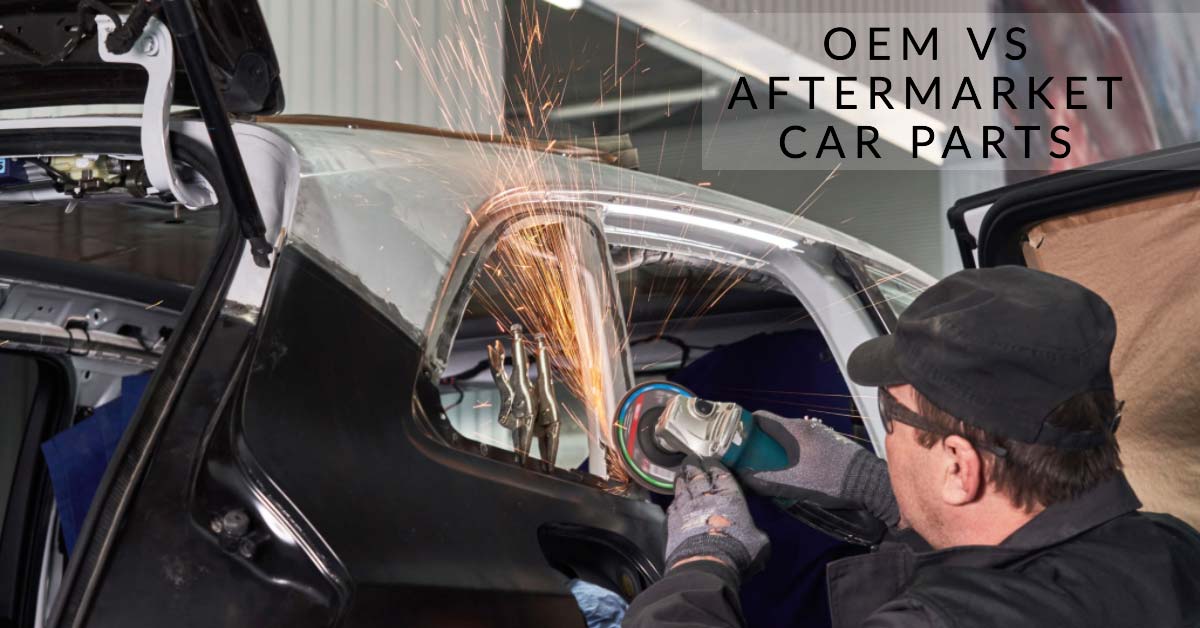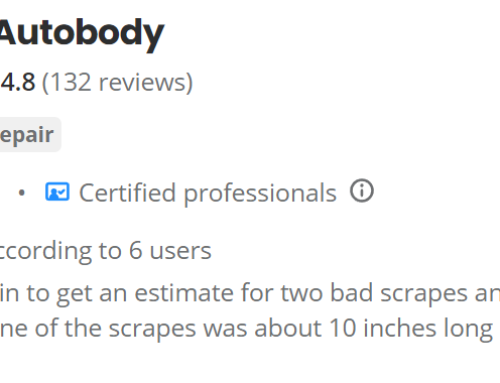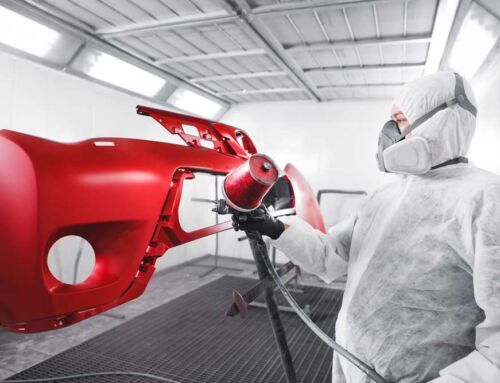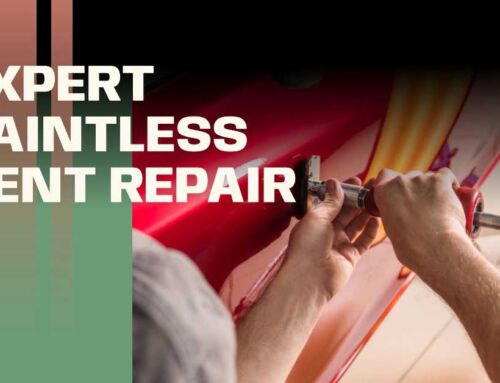In the automotive repair landscape, the debate over OEM (Original Equipment Manufacturer) and aftermarket parts is perennial. Every car owner is faced with the question at some point: should I use genuine parts made by the car’s original manufacturer, or opt for third-party parts? Downtown Autobody, with its rich heritage in offering top-notch auto body repair services, brings you an insightful exploration of the benefits and drawbacks of both these options. The choice between OEM and aftermarket isn’t black and white; each has its merits depending on the circumstances and the specific needs of the car owner.
| Topic | Key Points |
|---|---|
| Introduction | Distinction between OEM and aftermarket parts. |
| Benefits of OEM Parts | Superior fit, quality, and warranty coverage. |
| Limitations of OEM Parts | Higher costs, limited availability. |
| Advantages of Aftermarket Parts | Cost-effectiveness, variety, and performance enhancements. |
| Downsides of Aftermarket Parts | Variable quality, potential voiding of warranties. |
| Making the Right Choice | Assessing individual needs, vehicle type, and budget. |
The Allure of OEM Parts
OEM parts are the gold standard in many auto enthusiasts’ eyes. These parts are made by the vehicle’s original manufacturer and are identical to the parts used in new vehicles. The first and most obvious advantage is fit and compatibility. With OEM, you’re virtually guaranteed a perfect fit for your vehicle, as these parts are specifically designed for your car’s make and model.
Secondly, the quality of OEM parts is consistently high. You’re getting a part that meets the strict quality standards set by your vehicle’s manufacturer. This peace of mind often translates into a smoother driving experience and increased longevity of the part.
Furthermore, many car owners appreciate the warranty and support that often come with OEM parts. In most cases, these parts come with a warranty, ensuring that any defects or issues will be handled by the manufacturer. Such warranties are often more generous than those offered with aftermarket parts.
However, a common misconception is that OEM parts are the only choice when filing a collision insurance claim. While this isn’t always the case, it’s important to be informed about the possibilities and restrictions set by your insurer.
The Limitations of OEM Parts
While OEM parts boast numerous benefits, they come with their set of challenges. The most prominent downside is the cost. OEM parts are typically more expensive than their aftermarket counterparts. This price difference can be attributed to the branding, quality assurance, and the monopoly of being the car’s official manufacturer.
In addition, availability can sometimes be an issue. For older car models or less common vehicles, sourcing OEM parts might be a challenge, leading to longer waiting periods for repairs. This delay can be inconvenient, especially if one relies on their vehicle daily.
Lastly, while many herald the consistent quality of OEM parts, it’s worth noting that “consistent” doesn’t always mean “best”. There are high-quality aftermarket parts that can outperform OEM parts in specific scenarios or provide a unique functionality that OEM doesn’t offer.
Aftermarket Advantages: Beyond Affordability
Diving into the world of aftermarket parts, the diversity is immediately noticeable. Aftermarket refers to any car part that isn’t sourced from the car’s maker. This vast market offers parts ranging from basic replacements to performance-enhancing components.
The chief advantage, of course, is cost. Aftermarket parts are often more affordable than OEM, making them a popular choice for those on a budget. Additionally, because of the variety, car owners can often find a part that offers a better performance or a particular feature they desire that might not be available from the OEM.
Furthermore, availability is rarely an issue. The aftermarket industry is vast, with numerous manufacturers producing parts for a wide array of vehicle makes and models. Whether you need a new panel replacement or specialized auto paint, the aftermarket world has you covered.
The Potential Pitfalls of Aftermarket
With variety comes variability. And this is where aftermarket parts can be a double-edged sword. While many aftermarket components match or even exceed OEM quality, there are also those of inferior quality. It’s crucial to do diligent research and purchase from reputable suppliers.
Another consideration is warranties. Using certain aftermarket parts can void a vehicle’s warranty, especially if the part leads to further damage or isn’t compatible with the vehicle. It’s always wise to check the vehicle’s warranty terms before choosing an aftermarket part.
Lastly, while there’s an allure in customization and the potential for enhancing performance, it’s essential to ensure that any aftermarket parts adhere to local regulations and safety standards.
Navigating the Landscape: Making the Right Choice
Choosing between OEM and aftermarket car parts often boils down to individual preferences, the type of vehicle, and one’s budget. Both options have their pros and cons. While OEM offers reliability and guaranteed compatibility, aftermarket provides variety and often more budget-friendly choices. To assist in your decision-making, we’ve compiled a concise table outlining the pros and cons of both options:
| OEM Parts – Pros | OEM Parts – Cons | Aftermarket Parts – Pros | Aftermarket Parts – Cons | |
|---|---|---|---|---|
| Fit & Compatibility | Guaranteed fit for your vehicle model. | N/A | Potentially broader variety to choose from. | May not always be a perfect fit. |
| Quality | Consistent high quality. | “Consistent” doesn’t always mean “best”. | Potential for higher performance in some areas. | Quality can vary greatly between manufacturers. |
| Cost | Reliable, often with warranty. | Typically more expensive. | Often more affordable. | You might need to replace them more frequently. |
| Availability | Less variability can mean less confusion. | Might be hard to find for older or rarer models. | Wide range of options for many vehicle types. | Overwhelming choice might confuse some consumers. |
| Warranty & Support | Usually come with a warranty and support. | N/A | Some aftermarket parts might offer warranties. | Can potentially void vehicle’s warranty. |
Weigh your priorities, research well, and choose wisely. Remember, whether you’re considering collision repair or looking into advanced techniques, the goal is to ensure your vehicle’s longevity and optimal performance.
Conclusion
The journey between OEM and aftermarket parts is one of exploration and informed choices. Both paths offer unique advantages, with their own sets of challenges. As the automotive industry continues to evolve, so will the offerings in both these domains. Whether you’re an enthusiast looking to enhance your vehicle’s performance or a daily driver seeking reliable replacements, knowledge is your most valuable tool.
For further information or specific queries about your vehicle’s needs, feel free to contact Downtown Autobody with any questions. And remember, at Downtown Autobody, we understand the inconveniences of auto repairs, which is why we offer free loaner cars to our esteemed clientele.





